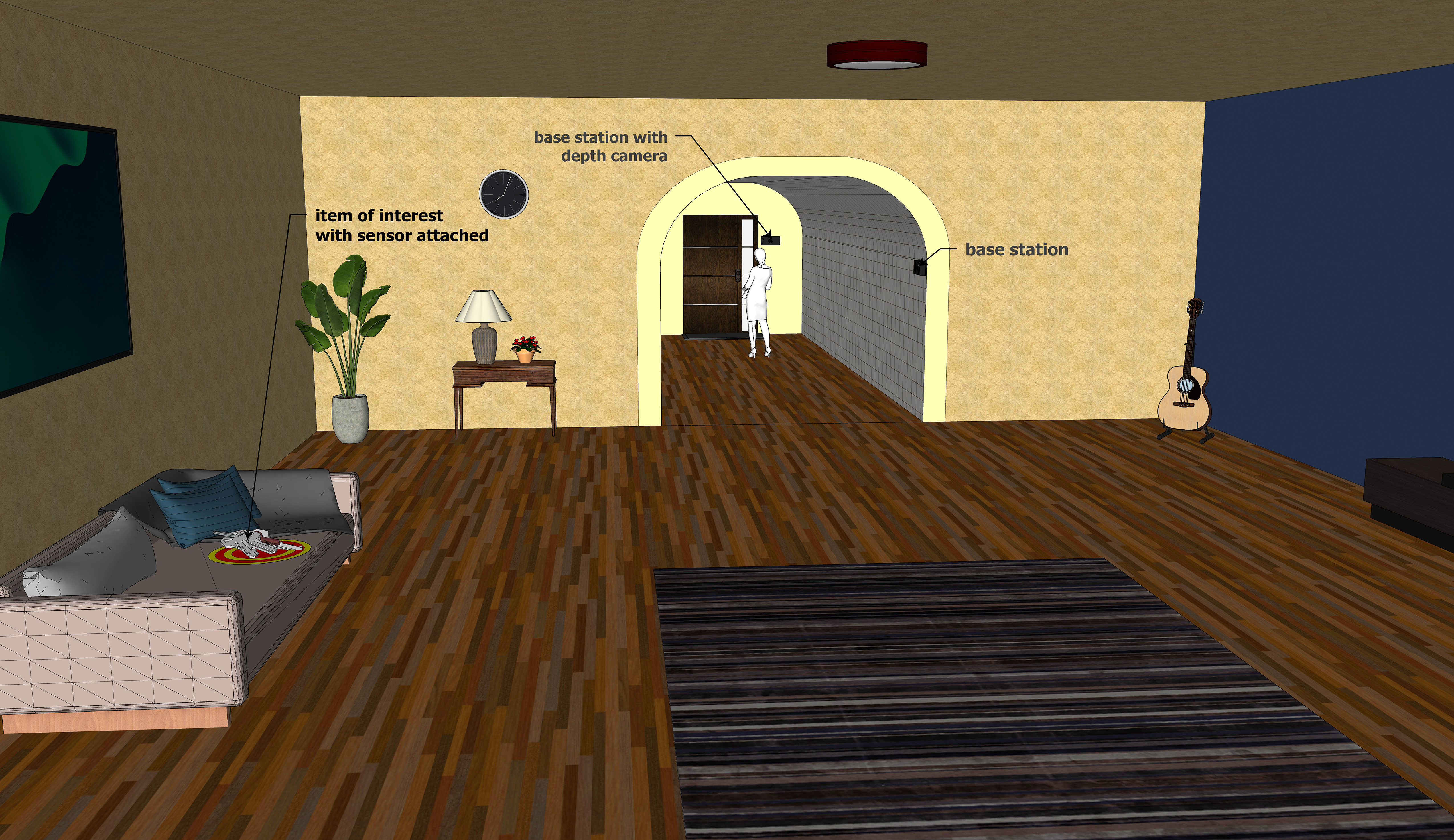Internet of Things (IoT) enabled systems afford low power consumption but often at the expense of high-frequency data. This project combines low-frequency data from a depth camera with received signal strength indication (RSSI) of a Bluetooth sensor. The study investigates whether data could be used to determine if a person is carrying the sensor through an indoor checkpoint (e.g., the front door of their home).
The system was developed to cover a hallway, measuring approximately 1.5m by 4m. Two IoT-enabled base stations were deployed in the environment: one at the inner end of the hallway and another at the opposite end, near the front door of the house. Both base stations would measure the RSSI from the sensor several times as the person walks through the hallway, away from the first base station and towards the second. Two base stations were used as they offer improved accuracy over a single reference point.
A depth camera, controlled by the second base station, was also set up near the exit. This was installed for detecting and tracking a person through the hallway as they approach, measuring how far away they would be from the exit in real time. Detection and tracking were accomplished using a single-shot detector (SSD) which is based on an implementation of a convolutional neural network (CNN).
Depth and RSSI measurements are obtained approximately 4 times per second and 3 times per second, respectively. The system was evaluated in a controlled environment of the hallway described above, with a single person wearing the sensor and maintaining line of sight with both base stations.
Two practical applications of this project would be: a) in a medical setting, alerting family or health carers if an Alzheimer’s patient were to wander out of a safe zone (see Figure 1), and b) attaching the sensor to an ‘item of interest’, such as a set of keys, to alert individuals that they might be leaving the house without the item (see Figure 2).


Course: B.Sc. (Hons.) Computing Science
Supervisor: Dr Joshua Ellul
Co-supervisor: Prof. Ing. Carl Debono
